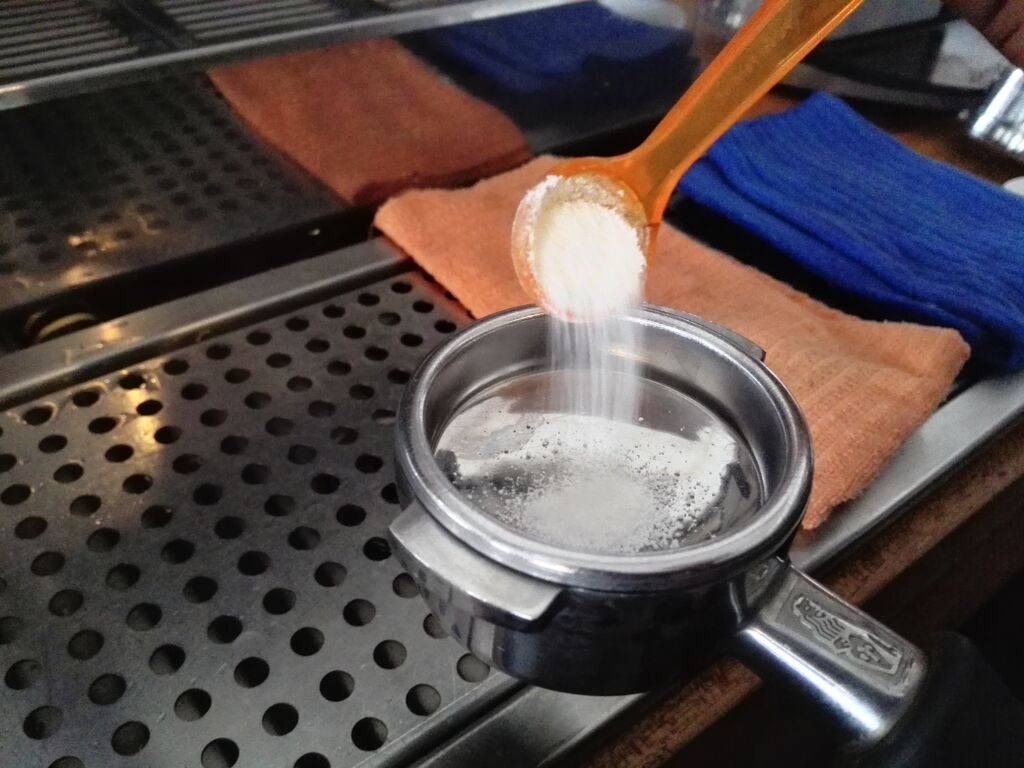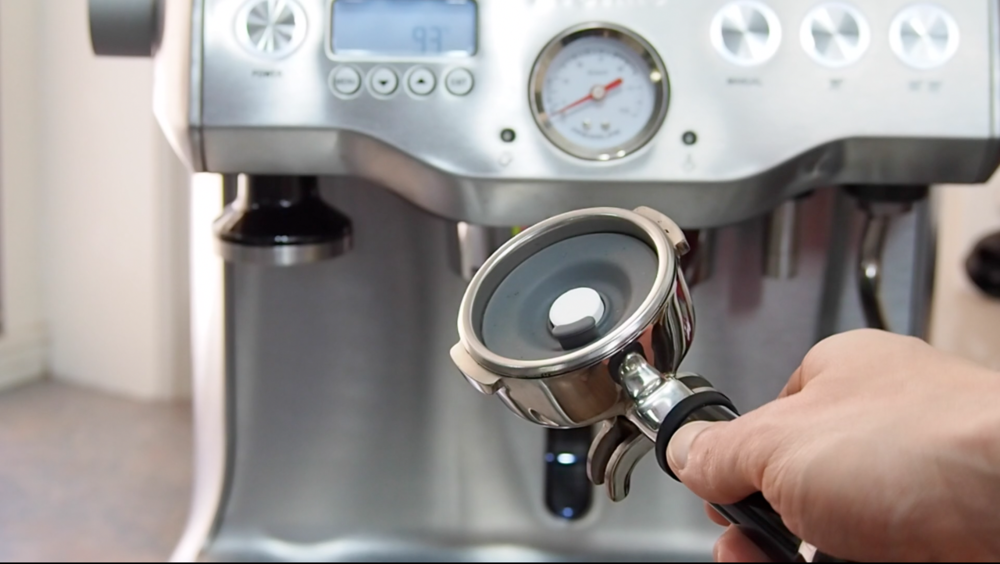19 Sep, 2018
Commercial Coffee Machine Maintenance
Keeping your espresso and coffee machine clean both on the outside and on the inside, is key to delivering the best results for your cup, sustainably over time. As a sophisticated piece of machinery, there are many parts that need to be kept clean. Two of the most important areas are the boiler and attached piping – cleaned by a process called ‘descaling’, and the area connected to the brew head – cleaned through ‘backflushing’. A common question that people have after buying their machine is what the difference is between these two processes.
- ‘Descaling’ – is the process of removing mineral build up in the boilers and water pipes flowing to the brew head.
- ‘Backflushing’ – is a process of removing the built up oils and sediment of the espresso grinds that flow back into the machine after each shot.
Basically ‘descaling’ is used for removing inorganic mineral deposits, while ‘backflushing’ is used for removing organic matter built up from the coffee grinds. This article will discuss each process in detail below.
Descaling
1. How does ‘descaling’ work?
As water flows through the machines boilers and piping, trace minerals form into limescale deposits (made up of calcium carbonate and other compounds). To remove the limescale, users can run a descaling agent (typically a weak acid composition) through the machine to dissolve the minerals and leave it clean. For minor levels of limescale, the descaling agent should be left in the machine for around 20 minutes. For heavier buildup that seriously impacts the machine’s performance, more of the descaling agent may be required and need to be left in the machine for longer to properly dissolve the scale. However, care must be taken not to use harsh chemicals or leave it inside the machine for too long, as this can potentially damage it.
We highly recommend using one of the professional descaling products available that will not damage your machine. If in doubt, or if your machine is having serious issues, it is recommended to have your machine serviced by a professional.
2. What happens if you don’t descale your espresso machine?
If enough scale builds up it can affect the flow of water in the pipes, and make the heating elements in the boiler less effective. The main reason for descaling is not so much that the mineral deposits will affect the taste (although this can happen), but to make sure the equipment is able to run properly. Beyond this, it is just a good idea both to prevent wear and tear and also because a finely tuned machine can deliver a more consistent, better tasting espresso – which is the whole point of investing in your machine.

3. How often do you need to descale an espresso machine?
This depends on how often you use your machine and also on how heavy or mineral-rich your water supply is. For most people just using their machines at home, once every 6 months is recommended.
4. Cleaning your espresso machine with vinegar?
It is possibly to find advice online in forums that recommends using vinegar as a natural cleaning solution. In fact, this is not recommended by most machine manufacturers (it typically advises specifically against this in their manuals) as it can cause harm to the components as well as leaving a lingering taste that can take a long time to completely flush out of the system. As mentioned above, it is important not to use any harsh chemicals, such as those used for cleaning lime deposits from kitchen surfaces. Not only are they bad for your health, but they can leave a highly unpleasant taste that can linger inside your machine, effectively ruining any future espresso brewing experiences you will have with it for some time.

Backflushing
1. What is ‘backflushing’?
Backflushing is the process of flushing water and/or a cleaning detergent back into the espresso machine where it will flow from the brew head down through the 3-way solenoid valve into the drip tray. This rinses the system of coffee residue and any grinds left behind when they flow back from the brew head after each espresso extraction. If this process is not done regularly, the stale coffee and grinds will start to go rancid, adding an unpleasant taste to the machine’s espresso shots.
2. How often should you ‘backflush’ an espresso machine?
For commercial machines they should be properly backflushed with detergent every day.
For machines used at home, it is recommended to at least backflush with water at the end of day (or better yet, after each use), and then to backflush with detergent once every week or two, depending on frequency of usage.
3. Should I use espresso machine detergent?
As with the question about using DIY cleaning agents such as vinegar for descaling, it is highly recommended to only use professional espresso cleaning detergents (such as the popular Cafiza brand) for backflushing. These detergents are relatively inexpensive, the ingredients are 100% non-toxic, and most importantly they work extremely well. Basically, it is fine to flush with water for awhile, but over time the coffee’s oils will start to build up, and these are not water soluble. The detergent will act as a surfactant and dissolve the oils with ease, leaving your machine parts clean and unstained.

4. Setting up portafilters for backflushing
In order to start backflushing, the portafilter’s basket must be replaced with a ‘blind basket’. This basket has no holes in it, and prevents any water from flowing through the portafilter, so that it instead diverts backwards and out into the drip tray.
- If detergent is being used (typically half a teaspoon) then the water should be run for around 10 seconds, then be switched off for 10 seconds. This cycle should be repeated 4 to 5 times (without adding any extra detergent after the first time).
- Once this is completed, the portafilter can be removed, the brew head flushed, and the portafilter inserted once again.
- To rinse, the same cycle should be repeated (4 or 5 times) without any detergent, to properly flush the system.
It is recommended to also use a cleaning brush to properly scrub the inside of brew head during this process. The goal is to remove as much grime and any remaining coffee grinds as possible.
Conclusion:
Cleaning can often feel like a chore, but just as you would take the time to care for new car you have bought to ensure it runs smoothly for many years, keeping your espresso machine clean is well worth the effort. Using the proper cleaning products makes the work easy, and ends up being much less of a hassle in the long run, compared to letting your machine deteriorate to a state where the taste of the espresso starts to be negatively affected.
